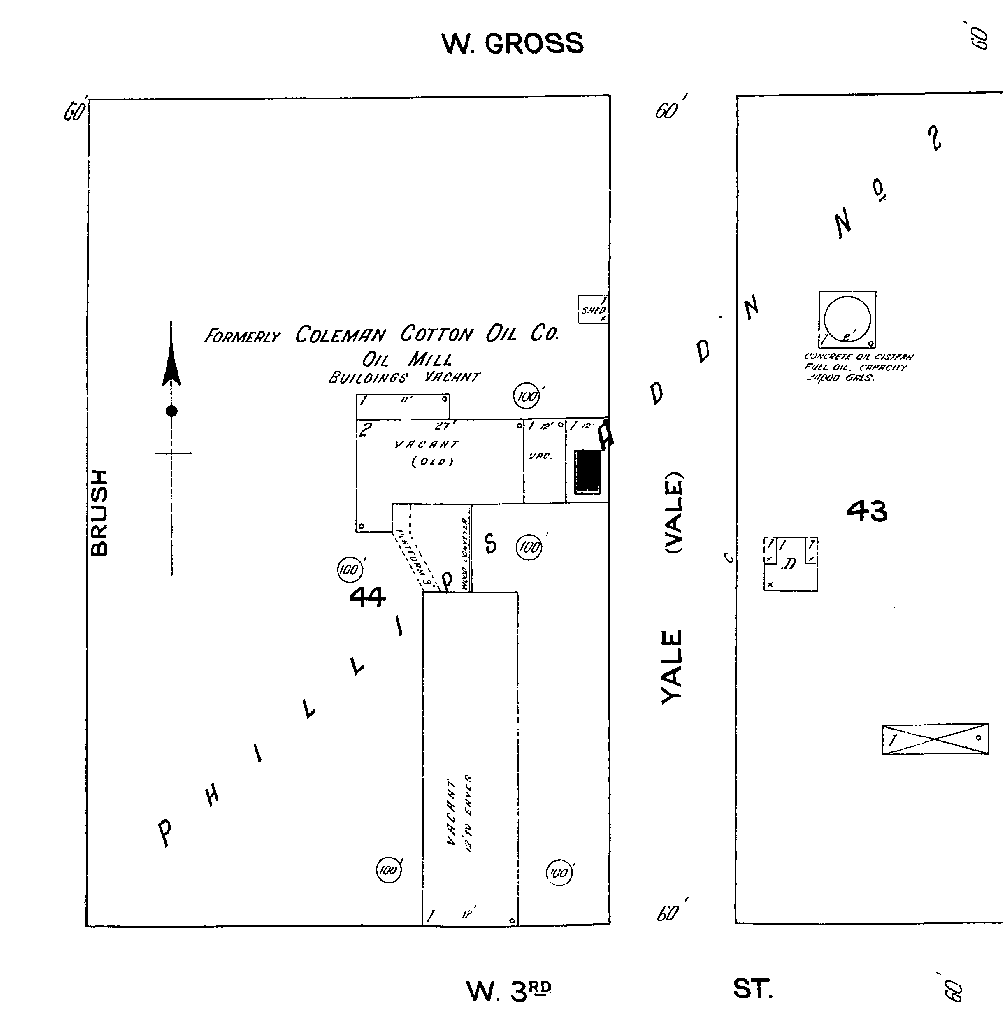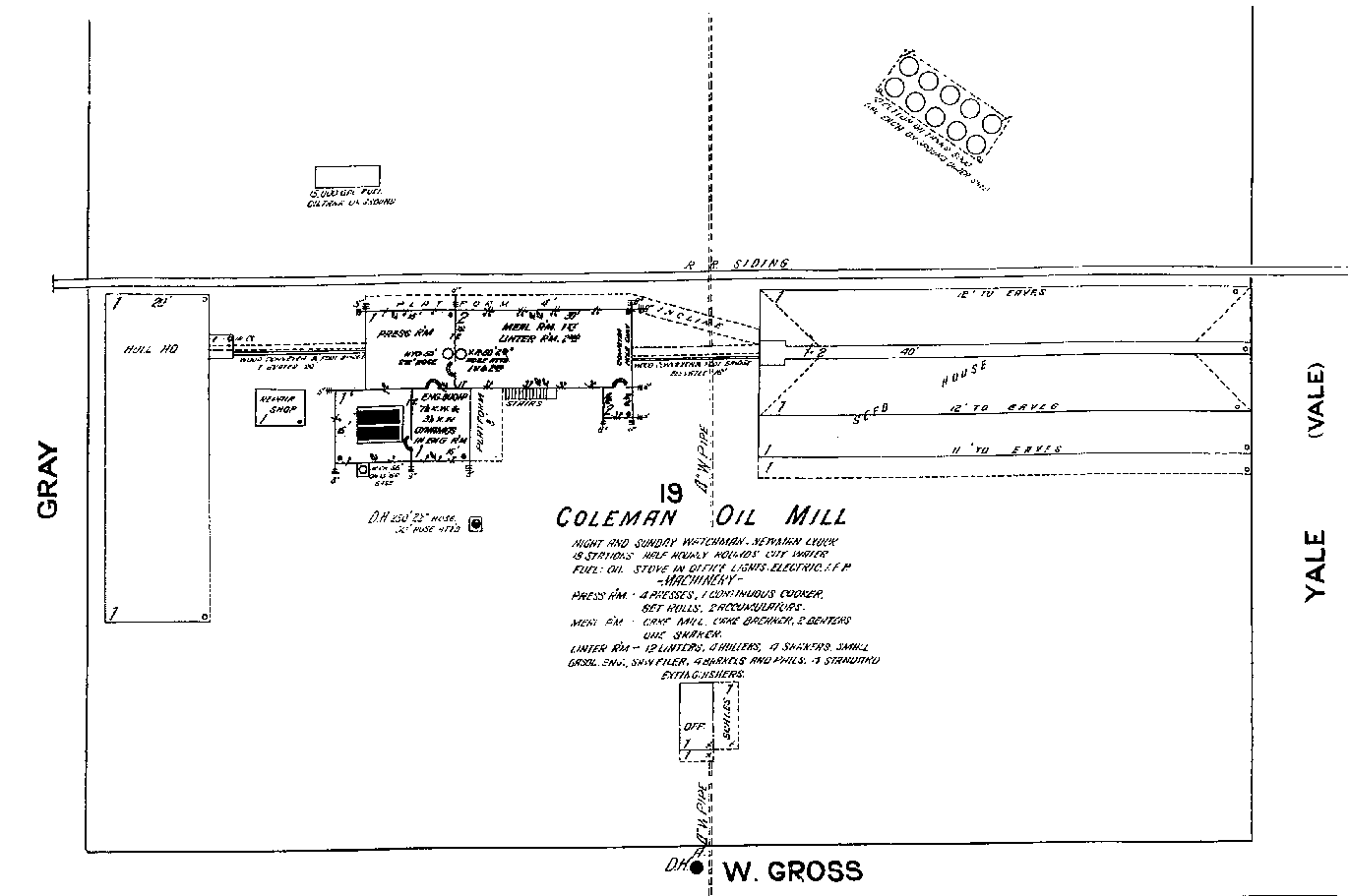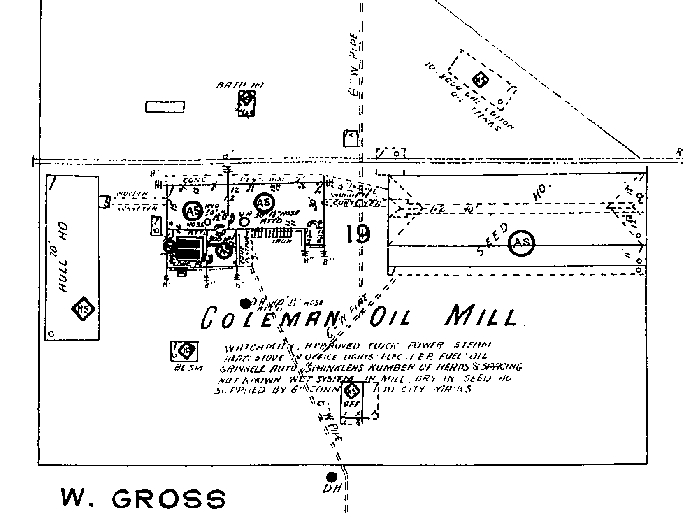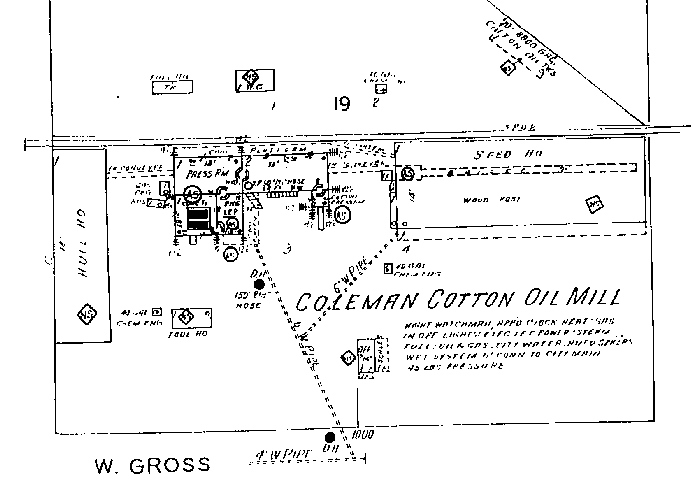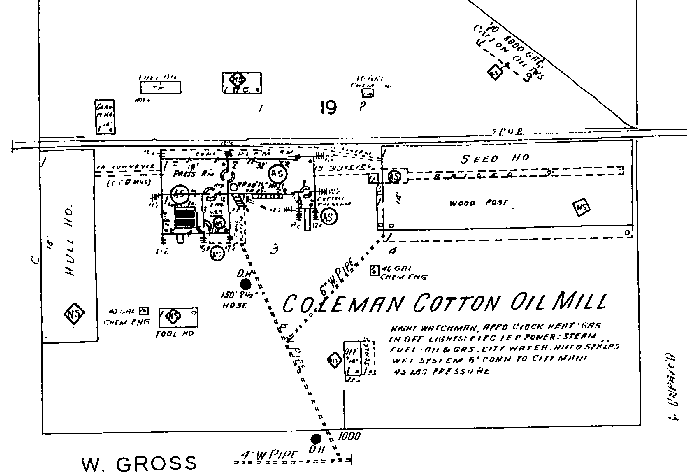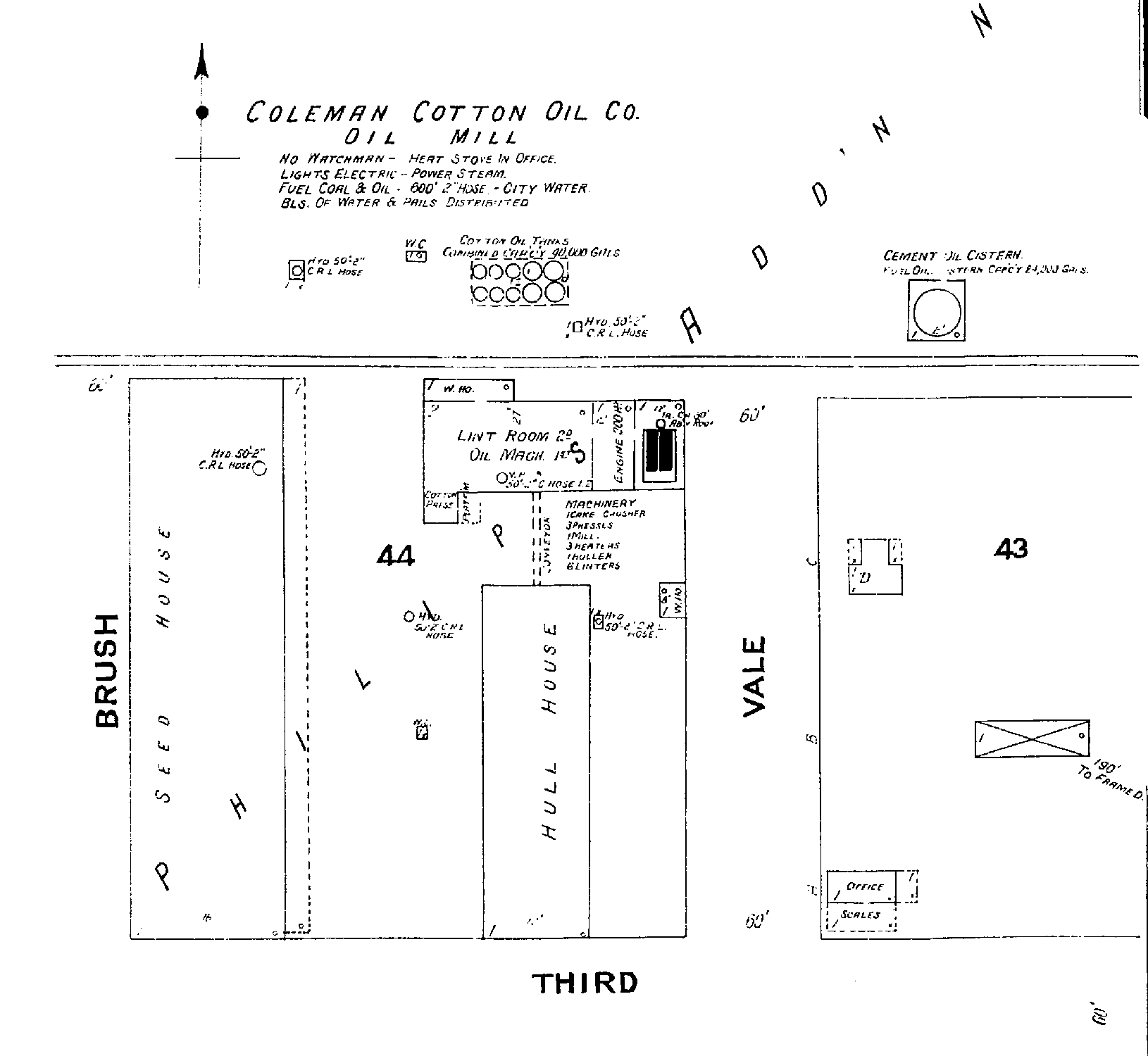Inside the Coleman Cotton Oil Mill
By Bill Laws
(Coleman County Chronicle or Democrat-Voice, probably
in the 1960's.)
My first job at the Coleman Oil Mill (in 1926) was pushing a hand truck
(with iron wheels) loaded with four 100 lb. sacks of cottonseed cake.
Cottonseed cake is a high protein feed for cattle and sheep, but is
not good for hogs. We had to push it up a long ramp to the attrition
mill for regrinding as it had developed some weevils. Then we would
load the meal on the had truck and take it back to the seed house and restack
it. We had to stack them about 20 feet high.
It took a lot of sweat and muscle and men were coming and going, but
I stuck with it until the job was finished. They paid $2.50 per day
(12 hours). However we were working at night.
The Coleman Oil Mill was a very large plant. Built about 1909
by Swift and Company, it was valued at about two million dollars.
I don't remember the exact amount of cottonseed they processed in a day,
but think it was about 90 tons.
When I started working there in 1926, Bill Rose was manager and also
a stockholder, B. T. Perry was superintendent, Ab Young was was night foreman.
I worked in the meal room the first season I was there. Some of my
co-workers were Paul Lykins, Jimmy Archer, Bev White, Earl Barker, Pete
Carriger and Ivy Barker.
The basic work of an oil mill is to extract the oil from the seed.
Some do it with hydraulic presses, some by an expeller which is a sort
of a large heavy screw inside a strong pipe. And some do it with
chemicals which separate the oil from the other parts of the seed and the
oil is then drained off.
Unfortunately the Coleman mill was the hydraulic press type which requires
a lot of hard labor. An oil mill can process cottonseed, peanuts,
soybeans, and a few nuts and other seeds such as corn. We usually
ran cottonseed and peanuts here, but we did have some soybeans one year.
They worked easy. The oil was rather dark.
I will try to give you a run-down on what happens to the seed after
they are unloaded in the seed house. First, they pass over some shakers
to remove the dirt and other foreign substance. Then to the lint
room where most of the lint is removed by saws, something like a gin.
Then down to the huller where some, but not all the hull are removed.
Then to the rolls where they are rolled into flakes (like rolled oats).
Then to a steam heated cooker where it is cooked and stirred and a little
water added for about an hour. Then it is let into the former a little
at a time to be wrapped in press cloth and pressed into a square cake.
Then a man takes a flat piece of steel with a handle on ti and shoved
it under the cake, picks it up, turns, walks to hydraulic press which has
15 slots to receive the cake. When the press is full the pan man
opens a valve which starts the hydraulic press which pushes the bottom
of the press up, thus pressing the oil out of the meal. Six thousand
pounds of pressure is held on the meal for about 20 minutes.
When it is pulled from the press in very hard cakes it is taken to the
stripper which removes the press cloth. Then into a breaker which
breaks it to small bits. Now it is cow feed. The oil goes into
a tank.
Most of our press cloth was made of horse hair, but in the last few
years we used nylon press cloth. It was easy to work with and lasted
much longer.
Most of the 20 years I spent in the oil mill was in the press room shoving
pans. That was the hardest job they had, but one thing for sure nobody
ever tried to get my job. Some of the other press room hands were
Vastine Moore, Bob Payne, Charlie Mitchell, Tommy Holloway, Dusty Brown,
Wess Griffith, Lewis Preas, Loyd Maples, Buster Lily, Sam and Roy Holloway,
Judge Fossett and a lot of others.
We had some accidents of course, and one or two lost their lives in
that old mill. I almost lost a good hand once. It was almost
cut off at the wrist, but Dr. Burke did an almost impossible repair job
and saved my hand.
Ben Floyd lost an arm. Tommy Holloway almost lost a hand.
Mr. Davis got an ankle broken. Wilbert Bailey lost a finger (gosh,
I bet that hurt).
In 1954 I was promoted to a better job, a sort of a working supervisor.
All I had to do was weigh trucks, keep the time book, pump the oil into
tank cars, shoot trouble, fire the boiler, operate the seed sterilizer,
make a protein test every three hours (and guess what) keep the floors
clean in the motor and boiler room, and oil the line shaft. But I
did it and I liked it.
I was very sorry when the mill closed in 1955. The reason they
gave was, the hydraulic press mill was obsolete and could not compete with
chemical extraction.
Some of the oil mill hands are still around, men like Les Griffin, Earnest
Williams, Joe Roberts, Bud Elliott, Bob Dunn, ..... (This
does not appear to be all of the article ... the rest will be added when
found.) |
